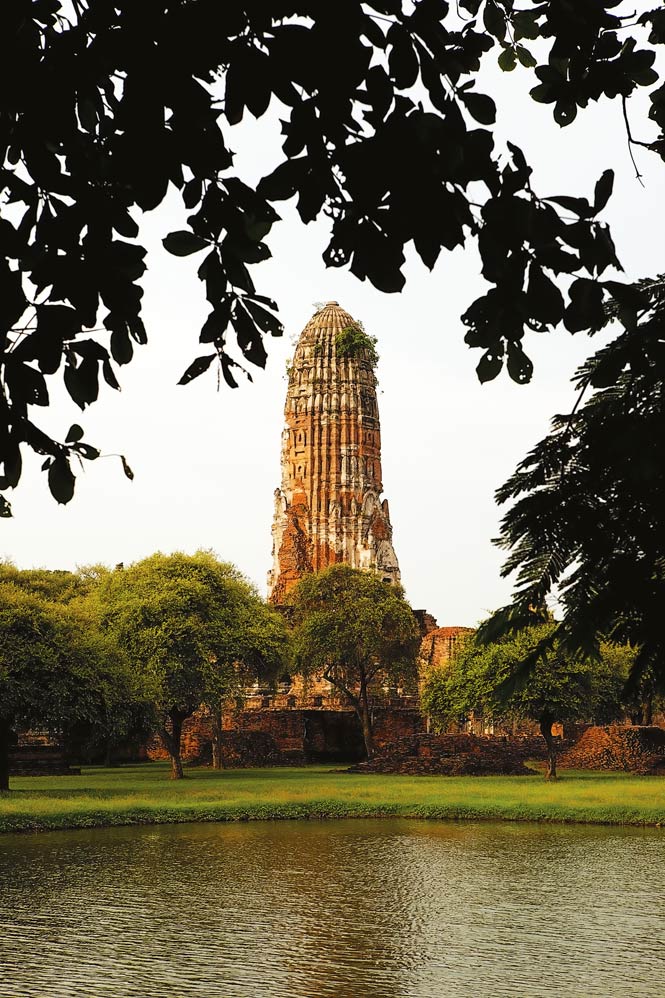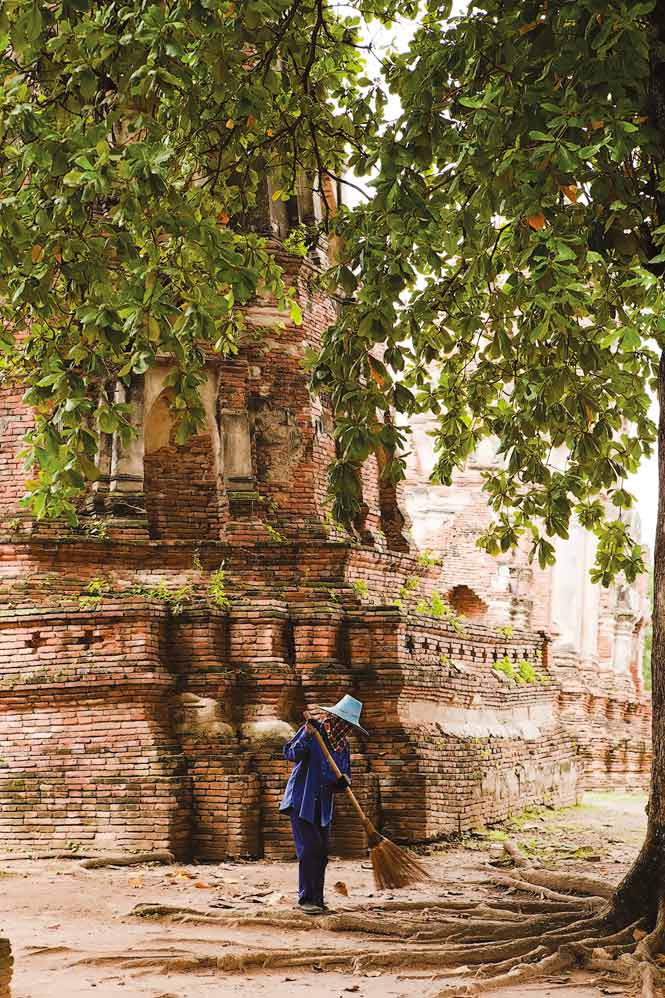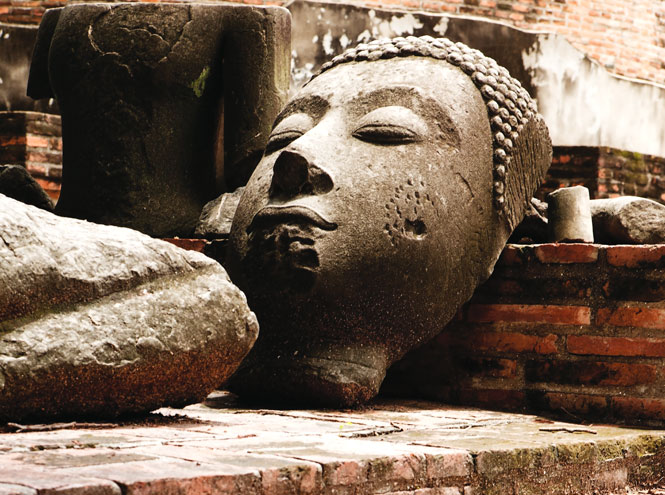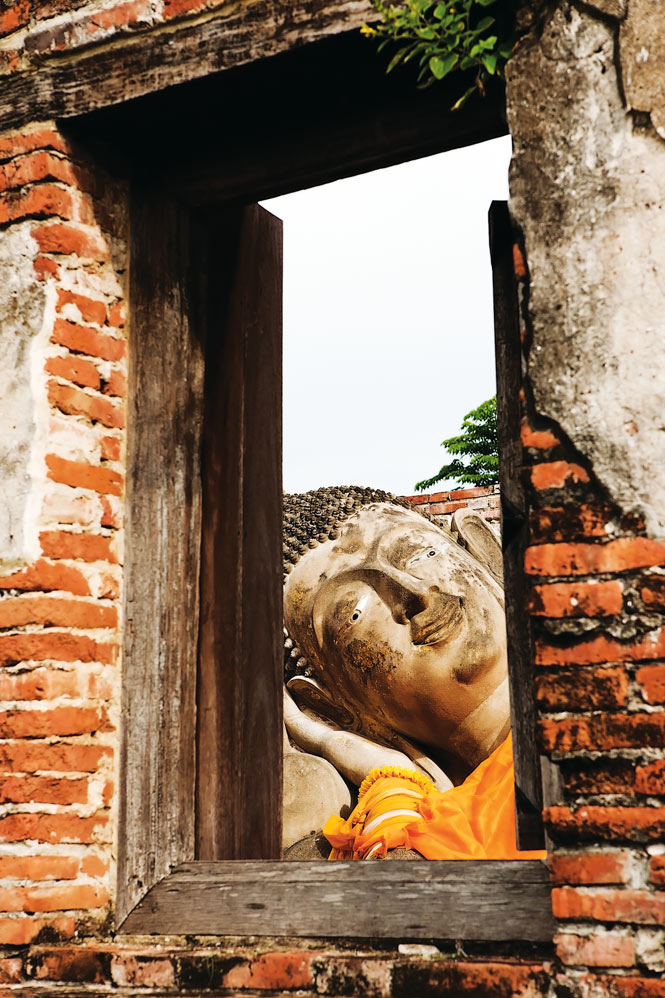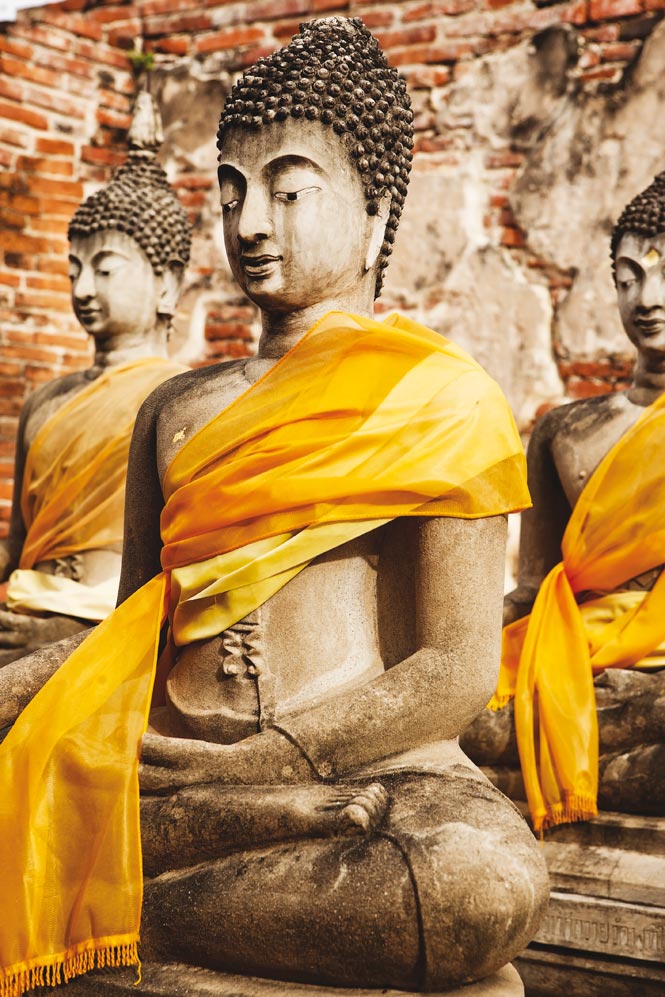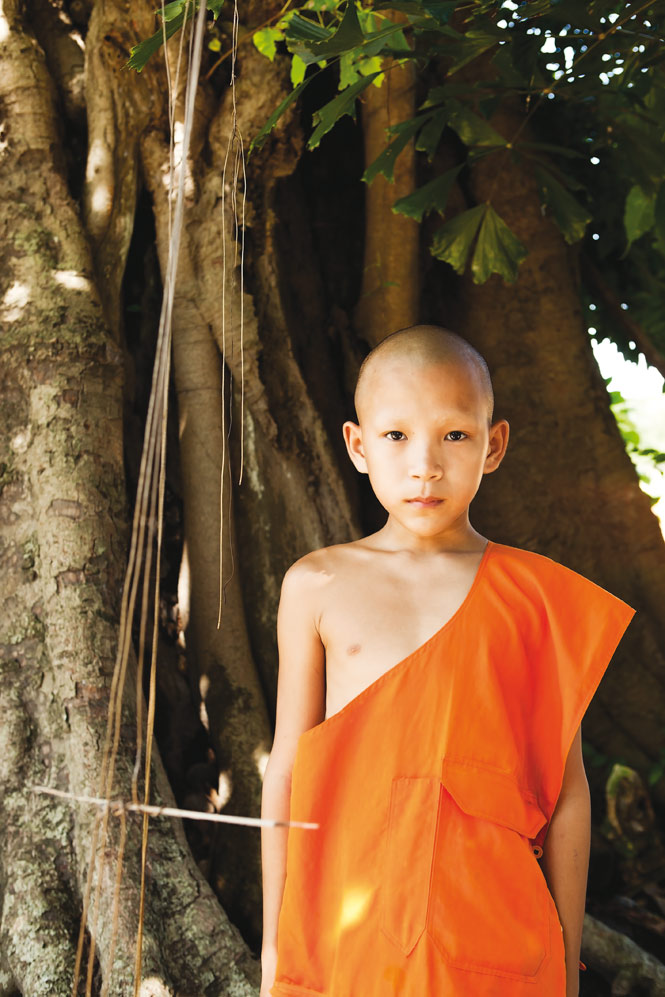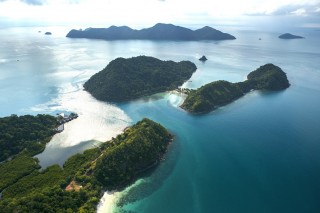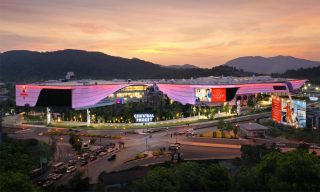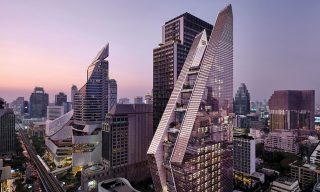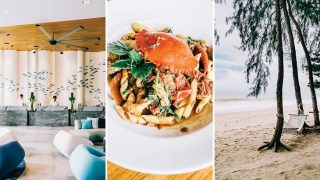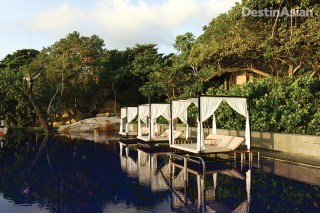Lopburi can also claim several fine 13th-century Angkorian ruins, in particular the intimate, three-tiered temple of Prang Sam Yod. In my haste to view the latter at sunset, I grab a pedicab and rush to check in to my hotel. It’s a dismal, near-deserted affair called the Asia Lopburi; I drop my bags in my room and head for the temple. When I return a couple of hours later, I discover that my door has been jimmied open, my padlocked bag cut and ransacked, and my laptop stolen. Despite the fact that he sits within eyeshot of the single staircase leading to the rooms, the desk clerk tells me he’s seen nothing.
I spend the rest of the evening at Lopburi’s Tourist Police station, where I give a statement to several sympathetic cops, including Officer Mai, who drives me back to the hotel, berates the clerk until he refunds my deposit, then takes me to slightly cleaner, but infinitely safer, lodging. While the guidebooks praise the Asia Lopburi, Mai says he never recommends the place: this year alone, the Tourist Police have handled eight other complaints from travelers who claimed their rooms were broken in to. The barred windows may keep out the thieving monkeys, but it seems nothing can stop an inside-job robbery.
After a cathartic castigation of the Asia Lopburi’s owner the following morning, I decide to give the town a reprieve. It’s had its ups and downs as well. As Ayutthaya ascended in status and power, Lopburi became an afterthought. It would remain a backwater until King Narai assumed power in 1656 after a 10-week political whirlwind that saw three royal coups. This era in Thailand was remarkable for its succession struggles and palace intrigues. Princes killed princes; one widowed queen even poisoned her son in order to install her lover on the throne.
Amid all this backstabbing, King Narai somehow managed to rule for 30 years, astutely opening Siam to foreign traders without succumbing to colonization. The monarch liked nothing better than escaping Ayutthaya for sleepy Lopburi, where he hunted for white elephants in the surrounding countryside. He soon made Lopburi his second capital, conducting affairs of state from a high-walled palace. Phra Narai Ratchanivet remains impressive to this day: a graceful blend of French and Siamese architecture with a throne hall to greet foreign ambassadors and dozens of warehouses for official goods.
While Narai pursued elephants and diplomacy in Lopburi, trouble brewed in Ayutthaya. In 1686, a group of Islamic courtiers and merchants who opposed Phaulkon, the king’s trusted foreign adviser, convinced a band of fearsome Macassar warriors from Celebes (now the Indonesian island of Sulawesi) to revolt. They planned to burn Ayutthaya, and then march to Lopburi and install Narai’s younger brother as king, provided he converted to Islam.
The plot was leaked; the ringleaders were executed. The Macassars refused to surrender. Phaulkon finally led 7,000 Siamese troops against them. No quarter was given in the battle that followed: any surviving rebel was tied to a post and abandoned to the king’s tigers. This didn’t eliminate Phaulkon’s rivals, however. Two years later, with Narai terminally ill and Phaulkon essentially commanding Siam, Phra Phetracha, chief of the royal elephant corps, made his move. After convincing Narai, a childhood friend, to make him regent, Phetracha had Phaulkon arrested for treason and executed. The king passed away a month later in his Lopburi palace; Phetracha ensured his own succession by putting Narai’s two brothers to death.
Walking the palace grounds, I find it hard to reconcile the serene scene—neatly manicured gardens, immense shade trees, a hushed, monkey-free atmosphere—with the medieval bloodbath that took place within these high, elegantly stuccoed walls. Yet while Lopburi’s political encore was short-lived, Phaulkon’s death was but a harbinger of the slaughter to come.
On the southwest corner of Ayutthaya Island, the Chao Phraya makes a broad turn from south to east, a bend in the river dominated by Wat Chaiwatthanaram, which rises behind a new levee built to hold back the swift floodwaters. The monument was built in 1630, and its name translates as “Temple of the Long Reign and Glorious Era.” It was wishful thinking: King Prasat Thong’s dynasty had lasted just two generations, ending with the death of his son, Narai, in 1688.
The glorious era of Ayutthaya crumbled less than 80 years later. Like Rome in the days of Nero, little was done as a Burmese invasion force rolled through Chiang Mai and Luang Prabang, conquering the neighboring kingdoms of Lanna and Lan Xang. When that army turned south in 1766, Ayutthaya was doomed. The king cavorted with his concubines, and placed his trust in his magicians and the monsoon rains. Neither held off the advancing Burmese, who laid waste to Siam’s fertile Central Plains. The enemy’s ensuing siege visited famine, fires, and epidemics upon the capital.
According to the Royal Chronicles of Ayutthaya, a crow spontaneously impaled itself on the spire of Wat Ratchaburana’s main prang—a very bad omen—just before the city fell in April 1767. When its stout brick walls were finally breached, the Burmese unleashed an orgy of violence from which Ayutthaya would never recover. King Ramathibodi II’s magnificent Buddha was stripped of its gold and melted down. The chedis of adjacent Wat Phra Si Sanphet somehow survived, but the nearby royal palaces, constructed of wood, were put to the torch. All that remains are their brick foundations, a colossal wreck that brings to mind Shelley’s Ozymandias. The sumptuous viharns (sermon halls) of nearly every major temple went up in flames. Foreign priests were imprisoned; Siamese courtiers became galley slaves. Starving townsfolk and farmers wandered the ruined countryside. At Wat Phananchoeng, one of the few temples to escape total destruction, the enormous seated Buddha is said to have wept.
A melancholy air, a sense of loss, still infuses Ayutthaya. Temples are slowly being restored, in an attempt to fill the void. But as an archeological site, it remains underfunded and endangered. Perhaps the biggest problem is the proliferation of unlicensed souvenir vendors—about 400 of them—that cluster around Wat Mongkol Borpitr, a prime tourist attraction near Wat Phra Si Sanphet.
Given its utter destruction by the Burmese, an appreciation of Ayutthaya requires an active imagination. I ignore the vendors and bike to the Ayutthaya Historical Study Center, where several huge dioramas complete with meticulously crafted scale models of the vanished palaces and temples provide some idea of just how grand this quiet town once was. Then I clamber up the central prang of Wat Phra Ram, where the panorama includes Wat Phra Si Sanphet’s trio of chedis and parasol-topped, tourist-toting elephants. The animals trumpet; the call reverberates off the ruins. Can London, now a far greater city, claim such a sight, or sound?
THE DETAILS:
Ayutthaya
Getting There
Ayutthaya is less than 90 kilometers north of Bangkok, or barely an hour’s drive by car. Northern Line trains bound for Ayutthaya, Lopburi, and ultimately Chiang Mai leave Bangkok’s Hualamphong Station 11 times daily.
When to Go
The best weather is during the November–March “cool season” following the monsoon. Ayutthaya holds a World Heritage Fair (involving a light-and-sound show and a parade of cultural performances) every December, this year falling on the 13th to the 19th. Lopburi’s most popular annual event is the Monkey Banquet, organized the last Sunday in November, when food and fruit are presented to the primates at Prang Sam Yod.
Where to Stay
The six-room Luang Chumni Village (2/4 Rojana Rd.; 66-35/322-990; luangchumnivillage.com; doubles from US$27), is Ayutthaya’s most attractive bed-and-breakfast option. A great location, complimentary Wi-Fi, rental bikes, and a very helpful owner add to its rustic charm. Lopburi, alas, has no accommodation worth recommending; it’s best toured as a day trip from Ayutthaya.
Where to Eat
Good Thai food and a winning Chao Phraya River view are on the menu at south-side Sai Thong River Restaurant (45 Moo 1 U-Thong Rd.; 66-35/ 241-449). A solid luncheon option is Malakor (Shi-kun Rd.; 66/81-712-5779), which serves Thai food in an old, raised wooden building just across the street from Wat Ratchaburana. More tourist-oriented establishments, such as Tony’s Place (66-35/252-578), can be found on Naresuan Road.
Originally appeared in the October/November 2010 print issue of DestinAsian magazine (“Remains of the Day”)

